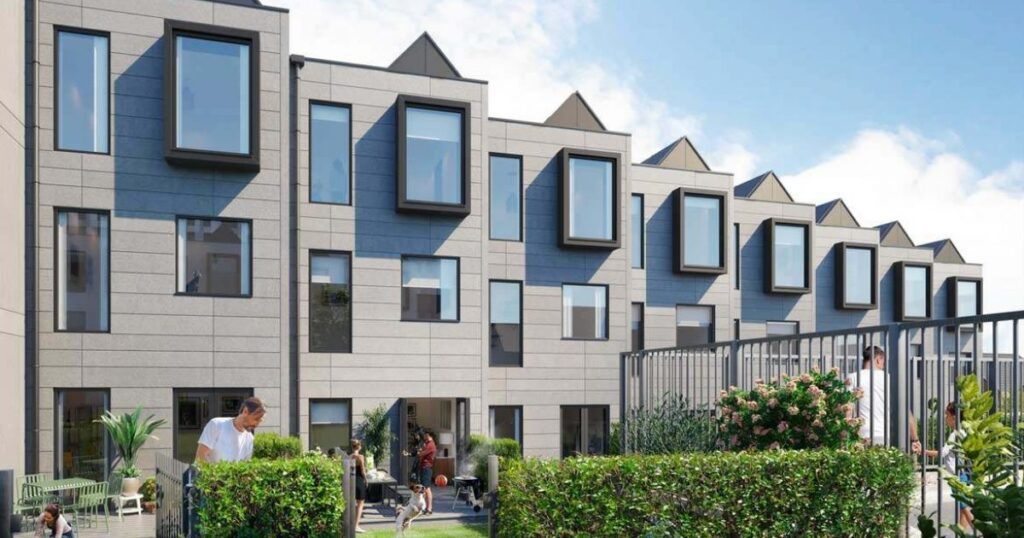
Healthcare facilities using modular construction and their benefits
In recent years, the healthcare industry has witnessed a remarkable transformation with the advent of modular construction. This innovative approach is redefining how we think about building healthcare facilities, offering numerous advantages that cater to the needs of modern society. As we delve into the world of healthcare facilities using modular construction, we find a promising solution that aligns with the evolving demands of the industry.

What is Modular Construction?
Modular construction is an innovative building technique that involves constructing sections or modules of a facility in a controlled factory setting before transporting them to the final site for assembly. This method offers significant advantages over traditional construction, including speed, cost-effectiveness, and flexibility.
How Does Modular Construction Benefit Healthcare Facilities?
The integration of modular construction in healthcare facilities brings about several benefits:
1. Speedy Construction
One of the primary advantages of modular construction is its ability to expedite the building process. With modules being constructed concurrently in a factory, the time required for on-site assembly is significantly reduced. This is crucial for healthcare providers who need to expand their facilities quickly to meet growing patient demands.
2. Cost-Effectiveness
Constructing healthcare facilities using modular construction can be more cost-effective than traditional methods. The controlled factory environment minimizes waste and lowers labor costs, resulting in substantial savings for healthcare organizations.
3. Flexibility in Design
Modular construction allows for a high degree of flexibility in design. Healthcare facilities can be customized to meet specific requirements, ensuring that they are tailored to the needs of patients and medical staff alike. The modular approach also makes it easier to expand or reconfigure facilities as needed.
4. Enhanced Quality Control
The factory-controlled environment ensures a high level of quality control in the construction of modules. This results in durable and reliable structures that meet stringent healthcare standards.
5. Sustainability and Eco-Friendliness
Modular construction is inherently more sustainable than traditional methods. The reduced construction time and waste, combined with the use of eco-friendly materials, contribute to a smaller carbon footprint for healthcare facilities.
Real-World Applications of Modular Construction in Healthcare
Numerous examples showcase the successful implementation of modular construction in healthcare:
Case Study: Modular Hospitals
During the COVID-19 pandemic, many countries turned to modular hospitals to quickly expand their healthcare capacity. These facilities, built in record time, played a vital role in providing essential medical services during the crisis.
Modular Clinics and Outpatient Centers
Modular clinics and outpatient centers are becoming increasingly popular due to their adaptability and cost-effectiveness. These facilities serve as convenient and efficient healthcare access points in both urban and rural areas.
Temporary Healthcare Structures
In emergency situations such as natural disasters, temporary modular healthcare structures can be rapidly deployed to provide immediate medical assistance. This flexibility is invaluable in saving lives and addressing urgent healthcare needs.
Challenges and Considerations
While the benefits of modular construction in healthcare facilities are substantial, there are also challenges to consider:
1. Initial Investment
The upfront cost of investing in a modular construction system can be higher than traditional methods. However, the long-term savings and benefits often outweigh the initial expenditure.
2. Regulatory Compliance
Ensuring that modular healthcare facilities comply with local regulations and healthcare standards is crucial. Close collaboration with regulatory authorities is essential during the planning and construction phases.
The Future of Healthcare Facilities Using Modular Construction
The future of healthcare facilities using modular construction looks promising. As technology advances and the demand for healthcare services continues to rise, modular construction is poised to play a pivotal role in shaping the healthcare infrastructure of tomorrow.
For more insights on the future of modular construction, you can visit here.
Conclusion
In conclusion, healthcare facilities using modular construction offer a transformative solution to the challenges faced by the healthcare industry. Their speed, cost-effectiveness, flexibility, and sustainability make them a compelling choice for healthcare providers worldwide. As we continue to embrace innovation, modular construction is set to revolutionize the way we build and operate healthcare facilities.

FAQs
1. What is modular construction in healthcare?
Modular construction in healthcare involves building sections of a facility in a factory setting and assembling them on-site. It’s a faster and more cost-effective way to expand healthcare infrastructure.
2. How does modular construction benefit patients?
Modular construction benefits patients by providing quicker access to healthcare services, especially in times of high demand or emergencies. It also ensures high-quality and customizable facilities.
3. Are modular healthcare facilities environmentally friendly?
Yes, modular healthcare facilities are more environmentally friendly due to reduced construction waste and the use of sustainable materials, contributing to a smaller carbon footprint.
This article contains affiliate links. We may earn a commission at no extra cost to you.